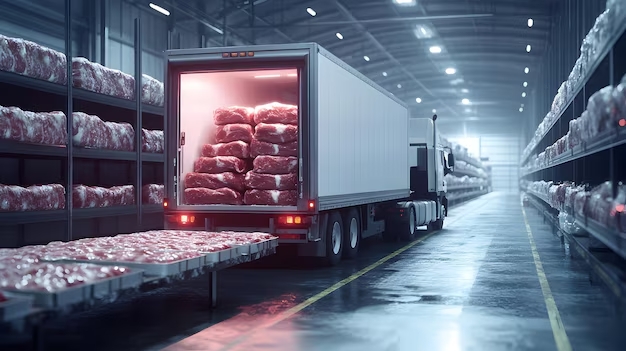Transporting goods with climate requirements: how to ensure proper conditions for cargo


Shipping things that can melt, freeze, spoil, or grow mold if the temperature’s off by a few degrees? Not exactly relaxing. Whether it’s strawberries, vaccines, live coral, or some very sensitive electronics, anything that needs a specific climate during transport is basically a ticking clock. And unless you’ve got endless patience and deep pockets, you probably want to get it right the first time.
So what really goes wrong with climate-sensitive cargo?
A few common (and frustratingly familiar) scenarios:
- The truck’s cooling unit fails halfway through the drive. No one notices till delivery.
- You load at the perfect temp... but the dock crew leaves the doors open for 20 minutes. Goodbye, stability.
- Airport tarmac in July. Cargo sits waiting in 38°C sun. “Climate controlled”? In theory.
- You trust the onboard sensors. But no one’s checking them. Or worse—they’re not calibrated.
Result? Product lost. Clients unhappy. And you—pulling reports, explaining why the mangoes turned brown in transit.
Step 1: Know what you're working with
Not all cargo is equally picky. Some stuff just prefers a general range (think: bottled juice). Other things? They’ll go bad faster than you can say “ambient drift.”
So ask the basics:
- What’s the safe temperature range?
- Is humidity a factor?
- Can it handle temperature fluctuations—or does it need a constant environment?
- What happens if something goes wrong? Is it recoverable? (Some vaccines aren’t.)
And here’s a small thing that makes a big difference: check how the packaging affects the climate inside. Insulated boxes, gel packs, liners—they all have their quirks. The label might say “keeps cold for 72 hours,” but have you tested it? In real-world conditions?
Step 2: Choose the right equipment (not just the cheapest option)
Refrigerated truck? Sure. But which type? Active or passive cooling? Multizone or single-temp? Here’s the short version:
- Active systems (like reefer containers or climate-controlled vans) regulate temperature with built-in units. Reliable, but power-dependent.
- Passive systems (think thermal blankets, insulated crates) just maintain what they’re given. Great for short hauls or air freight—but no miracles.
If the cargo’s critical and expensive, this isn’t the place to cut corners. It’s way cheaper to pay for a proper reefer than to replace 20,000 euros worth of spoiled meds.
Step 3: Monitor like you actually care
I know—data loggers, sensors, tracking... it can feel like overkill. But the moment something goes off, you’ll wish you had it. So here’s what you need:
- A calibrated temperature logger inside the shipment (not just outside the box)
- Real-time tracking, if it’s a high-stakes delivery
- Alerts for when thresholds are crossed
Also? Make sure someone’s watching. We’ve seen shipments sit at a warehouse for 6 hours with the alert system going off—and no one noticed because “the notifications were going to the wrong email.” Classic.
Step 4: Train the humans
All the tech in the world can’t fix a handler who doesn’t know the difference between “chilled” and “frozen.” So yes, this means:
- Brief the drivers (climate settings, handling instructions, what not to do)
- Educate warehouse staff (why those extra five minutes matter)
- Make cheat sheets. Label the cargo. Overcommunicate.
Because here’s the thing: most failures are human. Not mechanical. Not environmental. Just someone who didn’t know, didn’t care, or wasn’t told.
Step 5: Plan for the bad days
You will hit delays. Power failures. Equipment hiccups. Random weather events. Have a backup:
- Secondary routes
- Extra coolant packs
- Alternative storage nearby
- A driver who knows not to leave the doors open during lunch
It doesn’t have to be overkill. Just enough to say, “Okay, that sucked—but we were ready.”
Final thoughts
Transporting climate-sensitive cargo is kind of like babysitting a very expensive, very fragile, completely silent child. You won’t know they’re unhappy until it’s too late—unless you check. There’s no one magic solution.
It’s a bunch of small things done well:
- Know your cargo
- Use the right tools
- Track everything
- Train everyone
- Expect curveballs
Do that, and you’ll sleep better. Or at least... your mangoes will.

